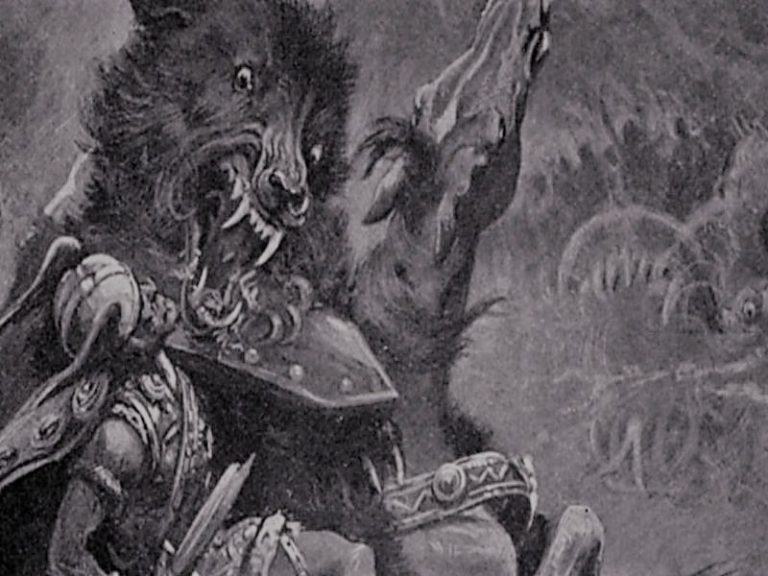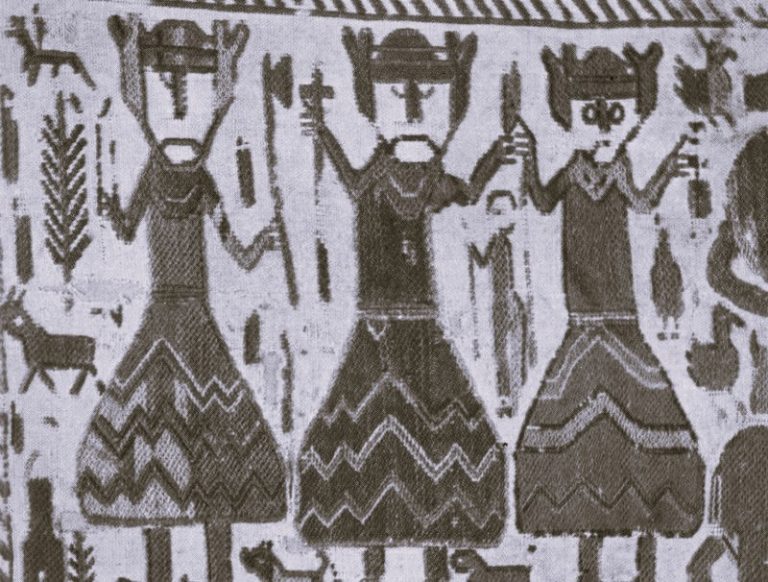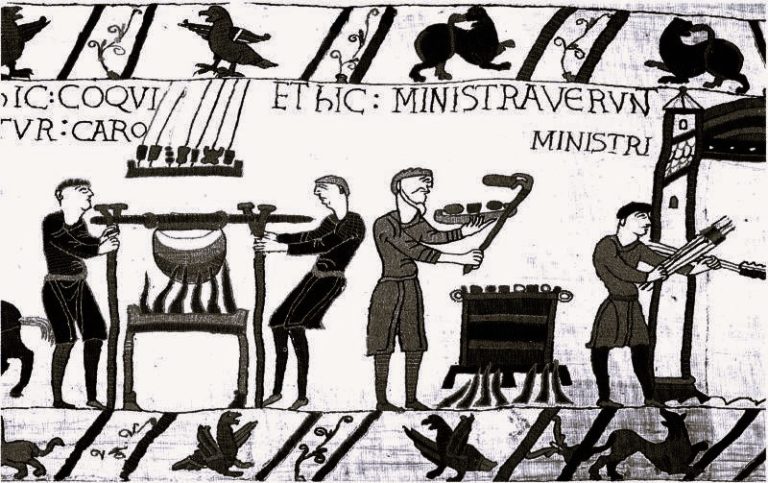
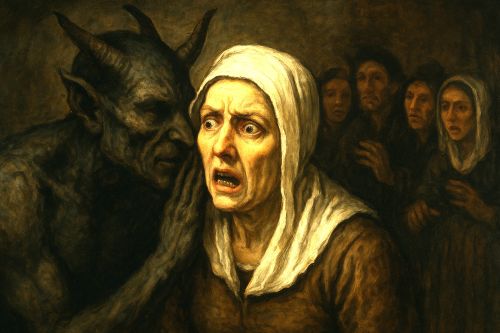
The end of witch hunts did not bring an end to the human impulses that sustained them. Beneath the Enlightenment’s triumph of reason, the same psychological and social mechanisms persisted.

By Matthew A. McIntosh
Public Historian
Brewminate
Introduction: The Logic of Fear and the Fragility of Truth
The witch hunts that convulsed Europe and its colonies between the fifteenth and eighteenth centuries stand as one of history’s most revealing studies in how fear corrodes truth. In the absence of material proof, rumor became the scaffolding of justice. Across villages, parishes, and courts, whispered tales of milk curdling, crops failing, or children falling ill took on the weight of diabolic conspiracy. Once codified by demonologists and sanctioned by authority, these suspicions evolved from neighborhood gossip into legal indictments that destroyed tens of thousands of lives.1
What made such a transformation possible was not simply superstition, but the social ecology that allowed hearsay to masquerade as evidence. The boundaries between faith, knowledge, and envy dissolved in the crucible of collective fear. A quarrel between neighbors or the envy of a widow’s small inheritance could ignite the flames of accusation. The legal framework of the time, deeply intertwined with theology, offered fertile ground for these suspicions to bloom unchecked. In this world, to be accused was to be guilty, and to defend oneself was to confirm complicity.
The defining feature of these persecutions was the acceptance of what came to be known as “spectral evidence,” testimony based on visions, dreams, or invisible afflictions. Such evidence, first systematized in European courts and later exported to colonial America, dissolved the empirical boundaries of law.2 If a witness claimed to see a witch’s spirit tormenting them, that alone might suffice for conviction. The court, having no means of disproof, converted imagination into fact and faith into verdict. The epistemic collapse that followed marked one of the darkest intersections of religion, rumor, and authority in the early modern world.
What follows traces that collapse from the invention of the witch in European demonology to the transmission of those ideas across the Atlantic. It examines how personal feuds, envy, and communal anxiety found legitimacy in legal institutions willing to sanctify hearsay. By the late seventeenth century, as skepticism and empirical reasoning began to challenge the authority of invisible forces, witch hunts gradually lost their grip. Yet their logic (faith in accusation over evidence, rumor over reason) remains disturbingly familiar. The story of the witch hunts, then, is not merely about superstition’s past but about truth’s vulnerability wherever fear becomes law.
The Invention of the Witch: Demonology and Authority

The witch of early modern imagination did not emerge from peasant folklore alone. She was a construction of learned men (clerics, jurists, and theologians) who systematized fear into doctrine. Before the fifteenth century, belief in maleficium, or harmful magic, was local and diffuse. Communities might blame a healer or a quarrelsome widow for misfortune, but these suspicions rarely rose to the level of organized prosecution. What transformed rumor into heresy was the intervention of ecclesiastical authority, which redefined witchcraft as a pact with the Devil rather than an act of isolated sorcery. This theological shift rendered gossip about witchcraft a matter of cosmic rebellion, turning private accusation into an affair of faith.3
Central to this transformation was Malleus Maleficarum, written in 1487 by Dominican inquisitor Heinrich Kramer. Drawing on scholastic reasoning and canon law, Kramer argued that witches represented an organized conspiracy against Christendom.4 His work, supported by Pope Innocent VIII’s bull Summis desiderantes affectibus (1484), supplied inquisitors and secular courts with a theoretical and procedural manual. It urged judges to treat rumor and reputation as the “first stirrings of diabolical infection.” In doing so, it formalized hearsay as the seed of inquiry.5 Witchcraft thus ceased to be a moral failing to be forgiven and became a contagion to be eradicated.
Jean Bodin’s De la démonomanie des sorciers (1580) expanded this juridical theology into the civic realm. Writing amid the French Wars of Religion, Bodin argued that disbelief in witchcraft was itself a crime against the state, an affront to divine order.6 His insistence on rigorous punishment, even in cases sustained only by indirect or circumstantial evidence, enshrined the presumption of guilt as a form of piety. The intellectual authority of such treatises created a feedback loop between elite theology and popular imagination. Learned demonology legitimized the gossip of villagers, while local rumors appeared to confirm the theories of scholars. The witch was no longer merely a neighbor to be feared, she was a vessel of the Devil’s will, and therefore beyond the reach of ordinary doubt.
This fusion of rumor and revelation marked the beginning of a century of persecution. The authority of printed demonology, combined with the bureaucratic reach of emerging states, gave fear an infrastructure. From the Inquisition’s chambers in Germany and Italy to the secular courts of Scotland and England, hearsay could now travel upward as testimony and return downward as law. In such a system, to speak of a witch was to summon the machinery of belief itself.
Rumor, Feud, and Gender: The Social Ecology of Accusation

Witchcraft accusations did not erupt in a social vacuum. They arose from the friction of daily life, grievances, rivalries, and resentments that festered in tight-knit communities. Beneath the veneer of theology lay a world of envy and survival, where small acts could be magnified into proof of devilry. In regions of poverty or recurrent famine, misfortune demanded explanation, and neighbors often supplied one another’s guilt. In Lorraine and Normandy, most accusations began as local gossip about quarrels, curses, or unexplained illness rather than as denunciations of explicit devil worship.7 The witch hunt thus began in the marketplace or the hearth long before it reached the courtroom.
Hearsay served a dual purpose: it bound communities together in shared suspicion while providing a means to redirect fear outward. Witchcraft charges often arose in moments of economic or emotional stress, when misfortune could be localized in a single figure: the poor widow, the sharp-tongued midwife, the unpopular neighbor.8 To speak ill of such a person was a social act that protected one’s own reputation by sacrificing another’s. These accusations spread like contagion, each rumor reinforcing the next until collective belief assumed the shape of fact. Fear functioned as both cause and proof; the louder the gossip, the truer it became.
Gender shaped this process profoundly. Approximately three-quarters of all those accused in Europe were women, often older, widowed, or marginal.9 The cultural image of the witch (as a woman who defied social norms, withheld charity, or wielded words sharply) made her the ideal scapegoat in a patriarchal world anxious about female independence. In Germany and England alike, women’s speech was treated as particularly dangerous, their quarrels recast as curses.10 What might once have been dismissed as household tension was reimagined through demonological frameworks as a battle between godly order and female disorder. Thus, rumor and gender converged: to gossip was to be accused, and to be accused was to confirm the gossip’s truth.
Material motives often underlay these suspicions. In agrarian towns, land and inheritance disputes frequently intersected with witchcraft allegations. A widow’s claim to a small plot, or a neighbor’s refusal to share grain, could be recoded as a sign of malefic intent.11 As James Sharpe has shown in his work on English witch trials, accusations commonly appeared in clusters following disputes over debt or charity, suggesting that social friction, not supernatural fear alone, was the engine of persecution.12 Gossip thus became not merely idle talk but a strategic instrument of property and power, wielded in the language of piety.
Ultimately, the social ecology of accusation reveals that witch hunts thrived on the same energies that sustained community: communication, trust, and moral surveillance. The paradox was that the very networks meant to ensure cohesion (church attendance, neighborly obligation, collective judgment) became conduits of suspicion. Once gossip gained divine sanction, it escaped contradiction. In this way, the witch trials exposed the fragility of truth in a world where words themselves carried the weight of death.
The Legalization of the Invisible: Spectral and Circumstantial Evidence

The witch trials reached their most destructive intensity when the invisible was made legally tangible. Courts across Europe began to admit forms of testimony that blurred the line between fact and belief. Dreams, visions, and secondhand stories entered the courtroom as valid proof of guilt. The accused might be condemned not for deeds witnessed but for acts imagined by others. The rationale was circular: the Devil could disguise himself in any form, therefore the absence of evidence proved his cunning.13 Once this logic took hold, the prosecution of witches became a self-sustaining enterprise, capable of convicting without verification.
In continental Europe, the late sixteenth and early seventeenth centuries saw the proliferation of such evidentiary reasoning. Trials in Bamberg and Würzburg, for example, relied heavily on testimony extracted under torture, where victims, often children, claimed to have seen the accused flying through the night or feasting with demons.14 Local magistrates compiled these accounts into elaborate confessions, then used them to justify further arrests. The repetition of stories across cases lent the illusion of corroboration, a manufactured consensus rooted in coercion. In this environment, rumor became archive, and archive became proof.
The notion of “spectral evidence” reached its most notorious expression in colonial New England. During the Salem witch trials of 1692, magistrates accepted claims that the specters or apparitions of the accused had tormented victims in their sleep or waking visions.15 The records, as collected in Bernard Rosenthal’s definitive edition, reveal how central this invisible testimony became. Accusers described shapes or shadows resembling their neighbors inflicting harm. When the accused denied the charges, the court took their denials as further proof that Satan was speaking through them.16 The epistemic inversion was complete: to be unseen was not to be innocent but to be supernatural.
Only in the aftermath of these crises did a few voices begin to question the legitimacy of invisible proof. Clergymen such as Increase and Cotton Mather had initially defended the trials but later conceded that spectral evidence was unreliable, a dangerous conflation of faith and fact.17 Across Europe and the colonies, legal reformers gradually demanded material verification: tangible acts, physical witnesses, or confession without coercion. The insistence on visibility marked a turning point in the evolution of evidentiary thought, signaling the first stirrings of modern skepticism. Yet the damage had already been done: a generation of fear had codified imagination as law.
Collapse and Enlightenment: The Discrediting of Hearsay

By the late seventeenth century, the machinery of accusation that had driven witch hunts for nearly two centuries began to falter. The same intellectual currents that were reshaping politics and science also challenged the evidentiary assumptions of witchcraft trials. A new emphasis on observation and rational inquiry began to displace revelation and rumor as legitimate sources of truth.18 The transition was neither swift nor universal, but it marked a decisive turn from theological certainty to empirical doubt. The Enlightenment’s call for verifiable proof struck at the heart of a system that had long thrived on hearsay.
The earliest cracks appeared within the legal profession itself. Jurists and magistrates, weary of endless cycles of accusation, began to demand higher standards of evidence. In Germany and France, a series of acquittals during the 1670s and 1680s reflected a growing skepticism toward coerced confessions and spectral testimony.19 Courts increasingly required corroboration from multiple witnesses or tangible acts of sorcery before conviction. Where once rumor alone had sufficed, the absence of physical proof now cast doubt. This procedural evolution was gradual but transformative: law was beginning to privilege the visible over the imagined.
Intellectual critics amplified this shift. Reginald Scot’s The Discoverie of Witchcraft (1584), though condemned at the time, anticipated later Enlightenment critiques by insisting that witchcraft beliefs were sustained by deceit, fear, and ignorance.20 In the early eighteenth century, the German philosopher Christian Thomasius openly ridiculed the notion of diabolic pacts, calling for the abolition of torture and the reintegration of accused witches into civil society.21 Such writers reframed witchcraft not as a spiritual crisis but as a moral and judicial failure, a collapse of reason under the weight of superstition. Their work helped to erode the credibility of hearsay as a mode of proof, exposing it as a symptom of human folly rather than divine revelation.
The press and emerging public sphere further accelerated the decline. Printed trial records, pamphlets, and early newspapers allowed for broader scrutiny of judicial conduct. As stories of wrongful executions circulated, public confidence in witch trials deteriorated.22 The very technology that had once spread demonological tracts now transmitted their discrediting. The European reading public, newly empowered by literacy and debate, began to see witch hunts as relics of a darker age. Reason, not rumor, was becoming the measure of justice.
By the early eighteenth century, most European governments had effectively abandoned witch trials. The last executions in Germany and Switzerland took place in the 1780s, long after the practice had become an embarrassment to enlightened states.23 In their place arose modern evidentiary standards that demanded material proof and rational coherence. Yet the collapse of witch hunting did not erase the conditions that had sustained it; it merely exposed them. The same human tendencies toward fear, rumor, and moral panic remained latent beneath the surface of modernity. What changed was not human nature, but the tools available to restrain it.
Colonial Echoes: Salem and the Transatlantic Legacy
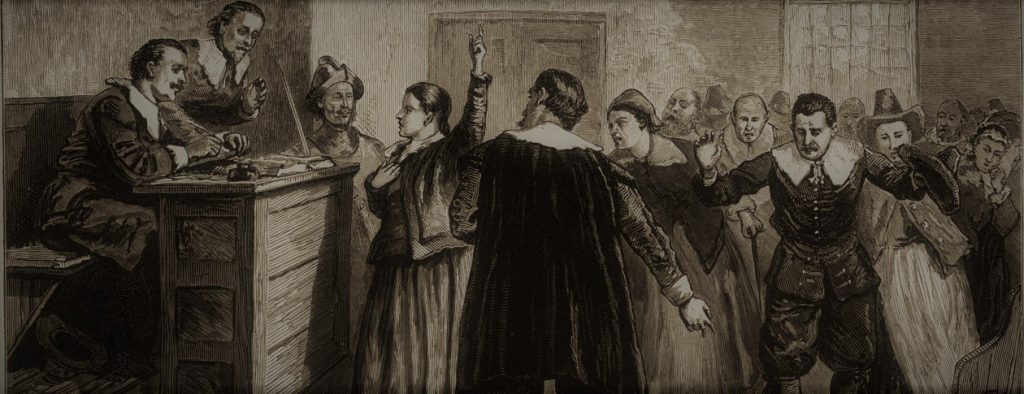
The European witch hunts did not end at the water’s edge. They crossed the Atlantic, carried by settlers who believed they were building a godly commonwealth but who brought with them the same epistemic fragility that had already devastated the Old World. In Puritan New England, the logic of hearsay found new life in a society obsessed with spiritual purity.24 Fear of the Devil intertwined with fears of social disorder, producing an atmosphere in which rumor was indistinguishable from revelation. The witch trials of colonial America, particularly the events at Salem in 1692, stand as the culmination of Europe’s long experiment in moralized suspicion.
The foundations of this transatlantic inheritance lay in theology. The Puritans understood their covenant with God as both spiritual and political, a collective contract that could be broken by individual sin. This framework magnified the power of accusation, for to name a witch was not simply to denounce a neighbor; it was to protect the entire community from divine wrath.25 The court records from Salem show how ministers and magistrates invoked biblical precedent to validate their proceedings.26 In a society where salvation depended on collective virtue, even a whisper of witchcraft carried existential weight.
The trials also exposed the same social dynamics that had animated their European predecessors. Many of the accusers and accused in Salem were entangled in property disputes, family rivalries, or long-standing community tensions. Mary Beth Norton’s archival study demonstrates that the epicenter of the crisis, Salem Village, was divided along economic and political lines, with accusations often following factional loyalties. She suggests the Indian wars were a driving force in these factors.27 Women once again bore the brunt of suspicion, particularly those who lived on society’s margins or defied gender expectations. The echoes of Europe were unmistakable: gossip disguised as godliness, envy dressed as moral duty.
Yet Salem was also the site of the witch hunt’s unraveling. As the trials escalated and spectral evidence grew more absurd, a few prominent figures, among them Increase Mather, publicly questioned whether the invisible could justly condemn the living.28 His pamphlet Cases of Conscience Concerning Evil Spirits argued that it was “better that ten suspected witches should escape than that one innocent person should be condemned.” That reasoning, rooted in a cautious theology of doubt, helped reverse the course of colonial justice. By 1693, the executions ceased, and many of the convictions were vacated.
The Salem experience forced early Americans to confront the limits of divine certainty in civil law. In 1702, the Massachusetts General Court formally declared the trials a tragedy born of “errors and mistakes.”29 The confession of judicial fallibility marked a moment of rupture in the transatlantic tradition of witch persecution. Yet the underlying forces (fear, faction, and the seduction of hearsay) remained potent. The New World had not escaped the Old; it had merely replayed its most haunting refrain on a smaller stage.
Conclusion: The Afterlife of Rumor
The end of witch hunts did not bring an end to the human impulses that sustained them. Beneath the Enlightenment’s triumph of reason, the same psychological and social mechanisms persisted: fear of the unknown, the need for moral certainty, and the allure of simple explanations for complex misfortunes. The witch trials revealed how easily rumor could impersonate truth when sanctioned by power. In this sense, their history is less about the disappearance of belief than about its adaptation to new forms.30
Historians such as Brian Levack and Lyndal Roper have emphasized that witch hunts were not merely aberrations of ignorance but structured expressions of authority.31 They demonstrated how institutions, when armed with the veneer of moral duty, could turn whispers into verdicts. The collaboration of church, state, and citizen created an ecosystem in which accusation was an act of virtue. When viewed through this lens, the witch hunts appear not as isolated tragedies but as recurring patterns in human governance, moments when fear overrides verification and speech becomes weaponized.
The epistemological crisis that fueled early modern witchcraft trials remains relevant. In an age of instant communication, misinformation spreads with a velocity that rivals seventeenth-century rumor. The same mechanisms of amplification (gossip, repetition, collective outrage) continue to transform suspicion into social reality.32 The witch hunts thus offer a mirror for the present, warning that the death of one form of superstition often gives rise to another, differently clothed but equally dangerous.
Ultimately, the history of European and colonial witch hunts is a study in the fragility of truth. Their legacy is not only a reminder of what happens when hearsay becomes justice, but also a testament to the resilience of doubt, the fragile human capacity to question what others demand we believe. The witch’s cry across the centuries is therefore not only one of suffering but of revelation: that fear, left unexamined, will always find a body to burn.33
Appendix
Footnotes
- Brian P. Levack, The Witch-Hunt in Early Modern Europe, 4th ed. (New York: Routledge, 2015), 21–25.
- Bernard Rosenthal, ed., Records of the Salem Witch-Hunt (Cambridge: Cambridge University Press, 2009), xxi–xxiv.
- Brian P. Levack, The Witch-Hunt in Early Modern Europe, 37–42.
- Heinrich Kramer, Malleus Maleficarum (Speyer: 1487), pt. I, q. 1.
- Summis desiderantes affectibus, Pope Innocent VIII, 1484, in Medieval Sourcebook, Fordham University, accessed October 2025.
- Jean Bodin, De la démonomanie des sorciers (Paris: Jacques du Puys, 1580), bk. 1, ch. 2.
- Robin Briggs, Witches and Neighbors: The Social and Cultural Context of European Witchcraft (Oxford: Oxford University Press, 1996), 23–29.
- Keith Thomas, Religion and the Decline of Magic (London: Penguin, 1971), 439–444.
- Brian P. Levack, The Witch-Hunt in Early Modern Europe, 141–143.
- Lyndal Roper, Witch Craze: Terror and Fantasy in Baroque Germany (New Haven: Yale University Press, 2004), 93–97.
- Robin Briggs, Witches and Neighbors, 102–108.
- James Sharpe, Instruments of Darkness: Witchcraft in Early Modern England (Philadelphia: University of Pennsylvania Press, 1997), 56–60.
- Brian P. Levack, The Witch-Hunt in Early Modern Europe, 204–209.
- Lyndal Roper, Witch Craze, 221–225.
- Bernard Rosenthal, ed., Records of the Salem Witch-Hunt, 112–118.
- Mary Beth Norton, In the Devil’s Snare: The Salem Witchcraft Crisis of 1692 (New York: Knopf, 2002), 141–145.
- Brian P. Levack, The Witch-Hunt in Early Modern Europe, 210–212.
- Brian P. Levack, The Witch-Hunt in Early Modern Europe, 243–247.
- James Sharpe, Instruments of Darkness, 211–214.
- Reginald Scot, The Discoverie of Witchcraft (London: William Brome, 1584), bk. 12, ch. 2.
- Brian P. Levack, The Witch-Hunt in Early Modern Europe, 251–253.
- Robin Briggs, Witches and Neighbors, 295–300.
- Lyndal Roper, Witch Craze, 259–261.
- Brian P. Levack, The Witch-Hunt in Early Modern Europe, 272–275.
- Mary Beth Norton, In the Devil’s Snare, 52–57.
- Bernard Rosenthal, ed., Records of the Salem Witch-Hunt, 102–109.
- Mary Beth Norton, In the Devil’s Snare, 174–180.
- Increase Mather, Cases of Conscience Concerning Evil Spirits Personating Men (Boston: Benjamin Harris, 1693), 25.
- Bernard Rosenthal, ed., Records of the Salem Witch-Hunt, 734.
- Brian P. Levack, The Witch-Hunt in Early Modern Europe, 297–299.
- Lyndal Roper, Witch Craze, 262–265.
- Robin Briggs, Witches and Neighbors, 305–308.
- Keith Thomas, Religion and the Decline of Magic (London: Penguin, 1971), 506–508.
Bibliography
- Bodin, Jean. De la démonomanie des sorciers. Paris: Jacques du Puys, 1580.
- Briggs, Robin. Witches and Neighbors: The Social and Cultural Context of European Witchcraft. Oxford: Oxford University Press, 1996.
- Innocent VIII, Pope. Summis desiderantes affectibus. 1484. In Medieval Sourcebook. Fordham University. Accessed October 2025.
- Kramer, Heinrich. Malleus Maleficarum. Speyer, 1487.
- Levack, Brian P. The Witch-Hunt in Early Modern Europe. 4th ed. New York: Routledge, 2015.
- Mather, Increase. Cases of Conscience Concerning Evil Spirits Personating Men. Boston: Benjamin Harris, 1693.
- Norton, Mary Beth. In the Devil’s Snare: The Salem Witchcraft Crisis of 1692. New York: Knopf, 2002.
- Roper, Lyndal. Witch Craze: Terror and Fantasy in Baroque Germany. New Haven: Yale University Press, 2004.
- Rosenthal, Bernard, ed. Records of the Salem Witch-Hunt. Cambridge: Cambridge University Press, 2009.
- Scot, Reginald. The Discoverie of Witchcraft. London: William Brome, 1584.
- Sharpe, James. Instruments of Darkness: Witchcraft in Early Modern England. Philadelphia: University of Pennsylvania Press, 1997.
- Thomas, Keith. Religion and the Decline of Magic. London: Penguin, 1971.
Originally published by Brewminate, 10.28.2025, under the terms of a Creative Commons Attribution-NonCommercial-NoDerivatives 4.0 International license.
